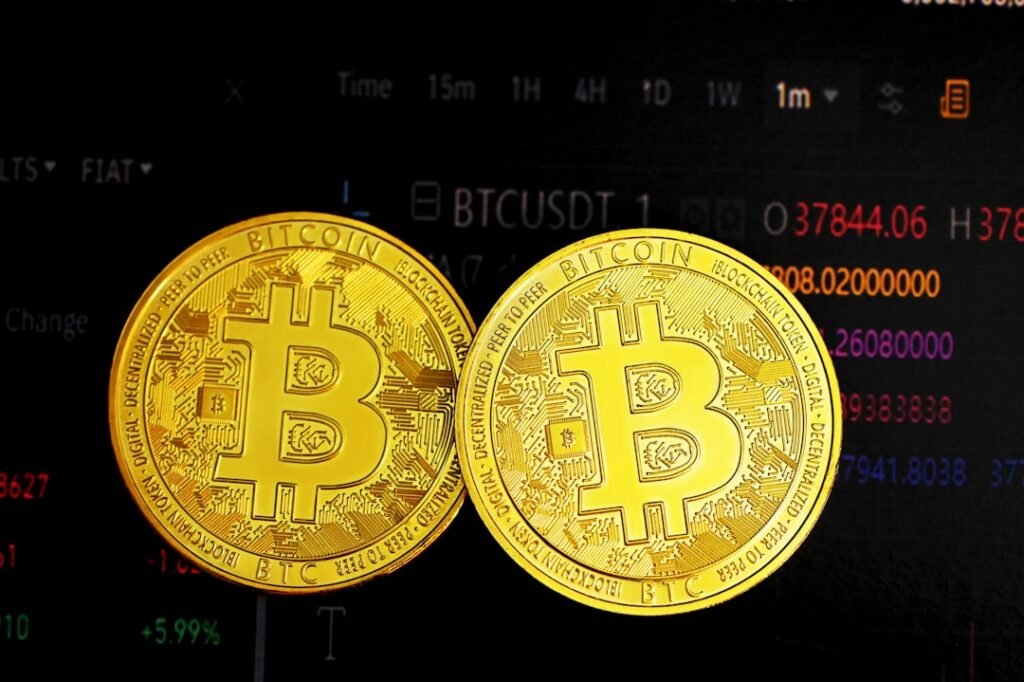The $540 Million Wake-Up Call: How Crypto Exchanges Are Fortifying Compliance Against Hackers and Regulators
The chilling echoes of 2024's massive crypto exchange breaches still reverberate: $305 million vanished from Japan's DMM Bitcoin, $235 million siphoned from India's WazirX. Alongside these devastating hacks, major international exchanges faced hefty fines for compliance failures. This dual threat landscape – relentless cybercriminals and tightening regulatory nooses – isn't just a passing storm; it's the new normal for centralized exchanges (CEXs). As crypto user numbers surge globally, the pressure intensifies for exchanges to build ironclad security and rigorous compliance frameworks. This isn't merely about avoiding fines or recovering stolen funds; it's the fundamental bedrock for building trust and achieving mainstream adoption. How exactly do cryptocurrency exchanges navigate this complex web of requirements? Let's dissect the essential pillars of crypto exchange compliance.
Decoding the Mandate: What Cryptocurrency Exchange Compliance Demands
At its core, compliance for crypto exchanges revolves around securing platform operations and preventing illicit financial flows. This translates primarily into robust implementation of Anti-Money Laundering (AML) and Countering the Financing of Terrorism (CFT) measures, adhering to both local regulations and international standards.
The FATF Blueprint: The Global Compliance Standard-Setter
The Financial Action Task Force (FATF) acts as the global architect for AML/CFT frameworks. Its recommendations form the bedrock upon which national and regional regulations for Virtual Asset Service Providers (VASPs), including cryptocurrency exchanges, are built. These rules crystallize into three critical operational pillars for exchanges:
- Know Your Customer (KYC) Requirements: Mandating the collection and verification of user identity information. This serves multiple purposes: screening against sanctions lists, blocking users from prohibited jurisdictions, and establishing a baseline for investigating suspicious activity. Effective KYC is foundational for reducing fraud and meeting regulatory obligations.
- Transaction Monitoring: Continuous surveillance of user transactions across the exchange platform to detect patterns indicative of money laundering, terrorist financing, or other financial crimes.
- Responding to Risky Activity: Establishing clear protocols for investigating alerts generated by monitoring, engaging with users, updating records, and crucially, reporting suspicious activity to relevant financial intelligence units (FIUs) as mandated by local AML laws.
Building the Fortress: Core Components of Exchange Compliance Programs
KYC: The First Line of Defense – Verifying Who's at the Door
Robust KYC procedures are non-negotiable. They verify user identities, mitigate fraud risk, and ensure legal adherence. This involves:
- Information Collection: Gathering essential user data. Commonly required elements include:
- عنوان البريد الإلكتروني
- Full legal name
- Date of birth
- Government-issued ID (Passport, Driver's License)
- Social Security Number (SSN) or National Identification Number
- Phone number
- Physical residential address
- Proof of address (e.g., utility bill, bank statement)
- Verification & Secure Storage: Utilizing technology to authenticate provided documents and identity claims, then storing this verified data securely.
- Beyond the Basics – Screening: After identity verification, exchanges must screen users against:
- Sanctions Lists: Checking databases like the US OFAC SDN list or the UK's OFSI consolidated list to ensure users aren't sanctioned entities or individuals. Services consolidating these lists streamline this process.
- Politically Exposed Persons (PEPs): Identifying users who hold prominent public positions, presenting higher inherent risks of bribery or corruption.
- Adverse Media: Scanning news sources for indications of potential criminal involvement linked to a user.
Implementing KYC: Approaches vary. Some exchanges collect extensive KYC upfront, while others employ a tiered system, requiring more information and scrutiny as users access higher transaction limits or services. The chosen model depends on the exchange's risk appetite and target customer base. Crucially, minimal KYC (e.g., just email) is increasingly seen as high-risk and insufficient by regulators.
Transaction Monitoring & Reporting: The Constant Vigil
Merely collecting KYC data isn't enough. Exchanges must actively monitor the flow of funds on their platforms to detect suspicious patterns.
-
Detecting Criminal Links: Sophisticated solutions are required to identify when users transact with cryptocurrency addresses linked to illicit activities like darknet markets, sanctioned entities, scams, or stolen funds. This involves real-time screening against constantly updated risk databases and setting configurable risk rules to generate alerts for compliance teams.
-
Meeting Reporting Obligations: Exchanges face mandatory reporting requirements:
- Currency Transaction Reports (CTRs): Required in jurisdictions like the US for cash-equivalent transactions exceeding thresholds like $10,000.
- The Travel Rule: A FATF mandate requiring VASPs (including exchanges) involved in transfers exceeding a threshold (typically $1000/€1000) to share sender and recipient KYC information with each other. This aims to break the anonymity chain in crypto transfers between regulated entities.
- Subnational Regulations: Exchanges must also comply with state or regional rules, like New York's stringent BitLicense requirements from the NYDFS.
-
Suspicious Activity Reporting (SAR): Beyond predefined thresholds, exchanges must identify and report suspicious activity, regardless of amount. Examples include:
- الهيكلة/التشكيل الهيكلي: Breaking down large transfers into smaller amounts just below reporting thresholds.
- Velocity Spikes: Sudden, dramatic increases in a user's transaction frequency or volume.
- Common Risky Counterparties: Numerous users transacting with the same unknown, potentially illicit address.
- Anomalous Behavior: Any significant, unexplained deviation from a user's typical transaction patterns (e.g., a small trader suddenly moving large sums).
SARs must typically be filed within strict timeframes (e.g., 30 days in the US after detecting the suspicious activity), necessitating efficient alert triage and reporting systems.
The Art of Response: A Risk-Based Strategy for Suspicious Activity
Detecting suspicious activity is only half the battle. Exchanges need a calibrated response strategy:
- Define Risk Tolerance: Establish the organization's overall risk appetite.
- Tailor Responses: Match the response severity to the assessed risk level of the activity (considering factors like amount and counterparty risk). Responses can include:
- Customer Outreach: Requesting explanation for the activity.
- Funds Freezing: Temporarily restricting access to assets.
- Transaction Limits: Restricting volume for users needing higher KYC tiers.
- Account Termination: Banning the user from the platform.
- Implement Graduated Actions: Use a tiered response system based on risk severity and user history.
- Automate Where Possible: As transaction volume grows, automated monitoring and SAR filing systems become essential to meet deadlines.
- Enforce IP Blocking: A critical tool for sanctions compliance, preventing users in prohibited jurisdictions from accessing the platform. Deficiencies here have been cited in major OFAC enforcement actions.
Reinforcing the Walls: Security as a Compliance Cornerstone
Robust security is intrinsically linked to compliance. Breaches expose user funds and data, directly violating compliance mandates around safeguarding assets. Key attack vectors demand specific defenses:
- Private Keys: The cryptographic keys controlling exchange wallets are prime targets.
- Threats: Malware, physical theft of hardware tokens, insider theft.
- Defense: Multi-Party Computation (MPC): Eliminates single points of failure by splitting the private key into shares distributed among multiple parties/secure environments. Combining MPC with hardware security (like Intel SGX) and multi-cloud distribution offers maximum protection.
- Deposit Addresses: The alphanumeric identifiers users send funds to are vulnerable to hijacking.
- Threats: Malicious browser extensions, clipboard hijacking, address spoofing on websites/messaging apps, malware.
- Defense: Test transfers (sending small amounts first), address whitelisting (only allowing withdrawals to pre-approved addresses), hardware wallets for user-side security, and secure address generation/display mechanisms.
- API Keys: Credentials used for automated trading or platform access.
- Threats: Phishing, keylogging malware, compromised servers/repositories.
- Defense: Treating API keys with similar security as private keys (e.g., MPC for API secrets), using chip-level hardware isolation (enclaves), and implementing advanced protocols like HMAC-MPC.
Additional Security Pillars:
- Regular Security Audits: Proactive vulnerability identification through frequent internal and external penetration testing and code reviews.
- Security Training: Ongoing education for all staff on threat recognition, secure data handling, and security best practices.
- Robust Record-Keeping: Maintaining meticulous, securely stored (including offline backups) logs of transactions, user interactions, KYC documents, and compliance decisions for audits and investigations.
Maintaining Vigilance: The Continuous Compliance Commitment
A compliance program is not a "set it and forget it" operation. It demands ongoing investment:
- Regular Training: Keeping compliance teams updated on evolving regulations, typologies, and best practices.
- Continuous Policy Updates: Adapting procedures in response to new regulations, enforcement actions, and emerging threats.
- Comprehensive Documentation: Maintaining clear records of all compliance activities, decisions, and rationales.
- Timely Reporting: Ensuring SARs and other mandatory reports are filed accurately and within deadlines.
The Road Ahead: Security and Compliance as Growth Engines
Cryptocurrency's trajectory towards mainstream acceptance hinges critically on establishing trust. This trust is built on a demonstrable commitment to protecting users and preventing illicit activity. For centralized exchanges, implementing the rigorous security measures and comprehensive compliance frameworks outlined here is no longer optional – it's the price of admission and the key to sustainable growth.
The $540 million stolen in just two hacks in 2024 serves as a stark reminder of the consequences of failure. Conversely, exchanges that master compliance and security position themselves as the safe, reliable gateways for the next wave of institutional and retail adoption. The future of crypto belongs to those who build the strongest fortresses, not just the fastest trading engines. The journey involves continuous adaptation, investment, and an unwavering focus on protecting the ecosystem from both external attackers and internal vulnerabilities.












